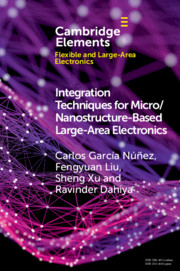Element contents
Integration Techniques for Micro/Nanostructure-based Large-Area Electronics
Published online by Cambridge University Press: 01 November 2018
Summary
Keywords
Information
- Type
- Element
- Information
- Online ISBN: 9781108691574Publisher: Cambridge University PressPrint publication: 08 November 2018
References
Accessibility standard: Unknown
Why this information is here
This section outlines the accessibility features of this content - including support for screen readers, full keyboard navigation and high-contrast display options. This may not be relevant for you.Accessibility Information
- 29
- Cited by
